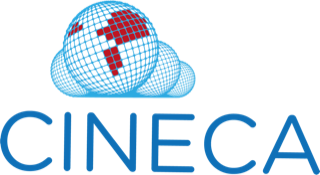CINECA Virtual Platform
Federated Healthcare Applications
CINECA has also explored how clinical applications can specifically leverage the secured data federation infrastructure developed within the project.
It has created a workflow for clinical researchers to access and reuse existing data from public omics databases, to integrate these data with their own data and to enable access to a suite of bioinformatics tools, via the Galaxy workflow platform, for advanced cancer biomarker discovery and for patient stratification.
In addition, CINECA has developed an Analytical sandbox for diagnostic services and a GDPR/FAIR compliant Diagnostic reporting, which provide accessible, end-user applications that remove the need to have deep technical understanding of the various components involved. The tools developed are applied to identify pathological (clinically-relevant) variants.
Finally, work has been done to design and evaluate a curation support system to help clinicians to decide which treatments should be considered given a set of somatic/germline mutations and some particular clinical conditions (e.g. diagnosis).
-
A service has been developed to evaluate genomic and transcriptomic features as biomarkers of disease progression and patient stratification.
A use case to analyse data from EGA was developed, which allowed for data access, download and analysis using the secure Galaxy environment using GA4GH standards and open-source tools like HTSget, PyEGA3 or Beacon.
Links
Trio Analysis Use Case in tutorial Galaxy
Information on Htsget protocol
Information on PyEGA3 download client
Information on Beacon
More detailed information available HERE
-
A service has been developed to identify pathological variants. It includes an Analytical Sandbox, which enables researchers to remotely log in to perform analyses from anywhere in the world, providing the infrastructure and bringing genomic data analysis to researchers without access to HPC compute facilities, and a Diagnostic Reporting Application (DRA), a FAIR-compliant reporting demonstrator designed to generate diagnostic reports based on genomic SNP variants.
Links:
More detailed information available HERE.
-
CINECA has developed a workflow to help clinicians characterize and understand the pathogenicity of a variant, and list possible treatments based on the literature.
This workflow makes a pathogenicity assessment by computing the frequency of the variants in the biomedical literature using Variomes API, and retrieving variant scores from Ensembl Variant Effect Predictor using Ensembl API. And provides treatment recommendations by estimating the frequency of occurrence of drug treatment in the scientific literature associated with the variant, using databases like Drugbank.
Links:
More detailed infromation HERE.

